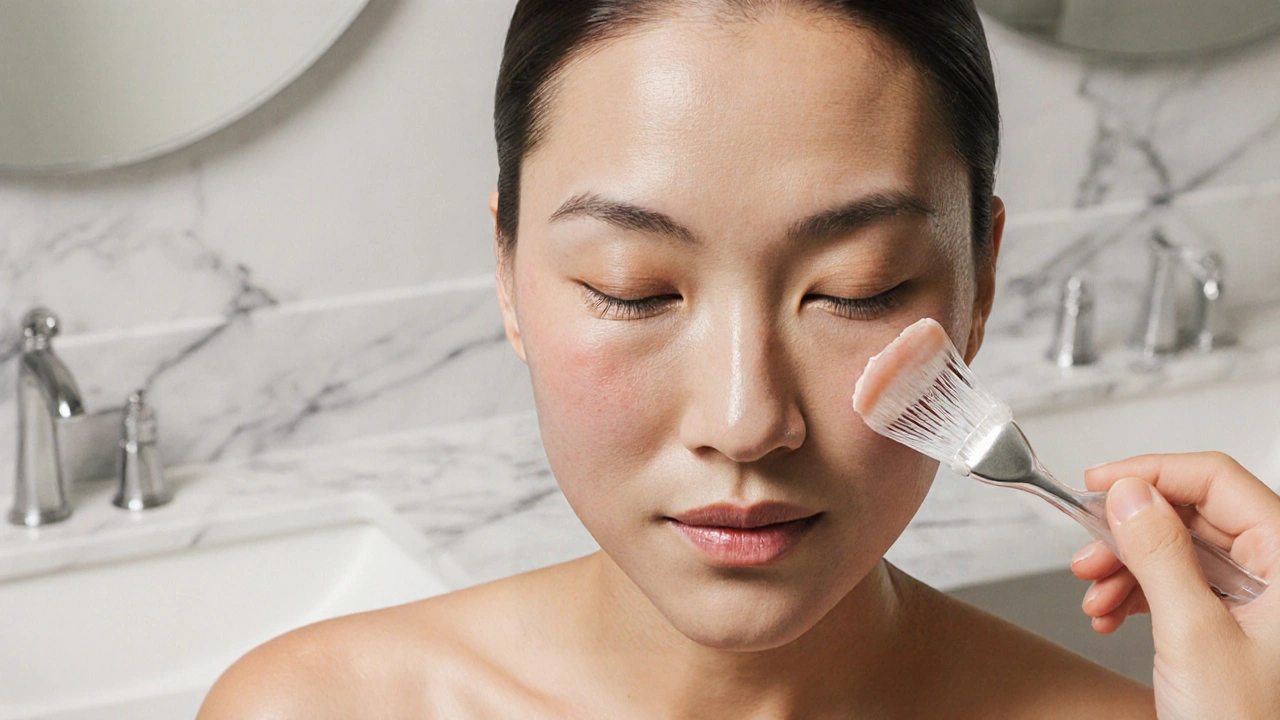Explore how chemical peels reduce wrinkles, boost collagen, and rejuvenate skin, with tips on types, safety, and after‑care.
Read MoreFacial Resurfacing: Techniques, Benefits, and Expert Insights
Facial Resurfacing, a group of cosmetic procedures that remove or remodel the outer skin layers to improve texture, tone, and signs of aging. Also known as skin resurfacing, it blends medical science with aesthetic art to give smoother, fresher skin. The core of facial resurfacing covers three main methods. First, laser therapy, a technique that uses concentrated light beams to target pigment, blood vessels, or collagen fibers is prized for precision and quick downtime. It requires specific wavelengths, and the choice of laser (ablative vs. non‑ablative) determines how deep the treatment goes. Second, chemical peel, a controlled application of acids that dissolve the top skin layers and trigger new cell growth influences collagen production, leading to firmer skin over weeks. The strength of the peel—light, medium, or deep—matches the desired result and the patient's skin tolerance. Third, microneedling, a minimally invasive procedure that creates tiny punctures to stimulate the body's natural healing response encourages fresh collagen and elastin, smoothing fine lines without chemicals or heat. Together, these methods form a toolkit that doctors tailor to each face, balancing effectiveness, recovery time, and cost.
The relationship between facial resurfacing and overall skin health goes beyond the surface. When you choose laser therapy, you’re also engaging in pigment correction, which can reduce age spots and improve uniformity. Chemical peels bring an added benefit: the exfoliation helps acne‑prone skin clear clogged pores, lowering breakouts in the weeks after treatment. Microneedling, on the other hand, works well with topical serums—think vitamin C or hyaluronic acid—because the micro‑channels increase product absorption, amplifying results. These connections illustrate how resurfacing techniques interact with everyday skincare routines, turning a single session into a long‑term rejuvenation plan. Most clinics also offer combination protocols, such as a light chemical peel followed by microneedling, to address multiple concerns—texture, discoloration, and laxity—in one treatment cycle.
What to Expect When You Start a Resurfacing Journey
Before you book, consider your goals, skin type, and recovery window. A quick consultation will map out which of the three methods fits your needs, whether you aim for subtle brightening or dramatic smoothing. Expect a short preparation phase—stopping retinoids or certain antibiotics can reduce irritation risk. Post‑procedure care is equally important: sunscreen, gentle cleansers, and moisturizers keep the new skin protected and hydrated. By understanding how laser therapy, chemical peels, and microneedling each play a role, you can set realistic expectations and enjoy the lasting glow they deliver. Below, you’ll find a curated list of articles that dive deeper into each technique, compare products, and share real‑world tips for optimal results.
